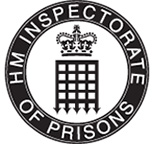Search results
| Publication type: | Child protection | Remove Publication type: Child protection |
Found 204 results « First« Previous1…91011…21Next »Last »
Publication — Child protection —
This inspection reviewed the progress made in Gwent Police since the publication of HMICFRS’s Gwent- National Child Protection Inspection in 2019. It is part of a rolling programme of inspections of all police forces in England and Wales.
Publication — Child protection, Joint inspection —
Between 24 February and 28 February 2020, Ofsted, the Care Quality Commission, HMICFRS and HMI Probation carried out a joint inspection of the multi-agency response to ‘front door’ services, evaluating all forms of abuse, neglect and exploitation, as well as an evaluation of the responses to children’s mental health in East Sussex.
Publication — Child protection —
Protecting children is one of the most important tasks the police undertake. Only the police can investigate suspected crimes, arrest perpetrators and monitor sex offenders. Police officers have the power to take a child who is in danger into a place of safety, or to seek an order to restrict an offender’s contact with children. The police service also has a significant role working with other agencies to ensure the child’s protection and well-being, longer term.
Publication — Child protection —
Protecting children is one of the most important tasks the police undertake. Only the police can investigate suspected crimes, arrest perpetrators and monitor sex offenders. Police officers have the power to take a child who is in danger into a place of safety, or to seek an order to restrict an offender’s contact with children. The police service also has a significant role working with other agencies to ensure the child’s protection and well-being, longer term.
Publication — Child protection —
Protecting children is one of the most important tasks the police undertake. Only the police can investigate suspected crimes, arrest perpetrators and monitor sex offenders. Police officers have the power to take a child who is in danger into a place of safety, or to seek an order to restrict an offender’s contact with children. The police service also has a significant role working with other agencies to ensure the child’s protection and well-being, longer term.
Publication — Child protection, Specialist inspection —
Following high-profile reviews of the Metropolitan Police Service’s handling of historic allegations of sexual abuse, the Home Secretary asked HMICFRS to review the MPS’s progress against recommendations in these reviews. This report sets out the findings from this inspection.
Publication — Child protection, Joint inspection —
Between 20 and 24 January 2020, Ofsted, the Care Quality Commission, HMICFRS and HMI Probation undertook a joint inspection of the multi-agency response to children’s mental health in Bexley. This inspection included a ‘deep dive’ focus on the response to children’s mental health needs.
Publication — Child protection, Thematic inspection, Vulnerability —
In early 2014, we began a national programme of child protection inspections. We examine the effectiveness of the decisions made by the police at each stage of their interactions with or for children, from initial contact through to the investigation of offences against them. We also scrutinise the treatment of children in custody, and assess how forces are structured, led and governed, in relation to their child protection services.
Publication — Child protection, Research and evaluation —
In 2014, HMICFRS started a rolling programme of inspections in every police force in England and Wales, looking at their response to child protection. To better understand the impact of these inspections on policing activity, we commissioned NatCen to carry out independent evaluation of the programme.
Publication — Child protection, Joint inspection —
This report draws together findings from six joint targeted area inspections, focusing on the multi-agency response to child sexual abuse in the family environment.




